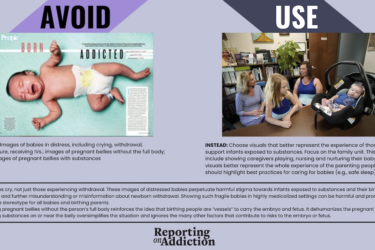
We’re all familiar with the very real issue of health disparities when it comes to receiving care throughout the United States. Those disparities also extend to the final days of life, according to a new study in JAMA Internal Medicine.
The National Hospice and Palliative Care Organization (NHPCO) estimates that 1.6 million to 1.7 million people received hospice care in 2014. The study noted that in the last two days of life — a time when symptoms are often intensified and families need additional support — visits by professional staff varied widely depending on race, day of the week and geographic location.
A retrospective analysis of Medicare hospice beneficiaries who died in federal fiscal year 2014 (Oct. 1, 2013–Sept. 30, 2014) found that more than 81,000 (12.3 percent) of 661,557 patients in hospice home care programs received no professional staff visits (physician, nurse, social worker or nurse practitioner) in the last two days of life. Medicare policy focuses on the provision of hospice care at “home” whether it is the patient’s home, an assisted-living facility, stand-alone hospice or a nursing home.
Alaska had the highest proportion of patients not seen in the last two days of life, (19.7 percent), followed by Washington (19.6 percent), New Jersey (19.2 percent) and Rhode Island (19.2 percent). In comparison only 3.8 percent of Wisconsin hospice patients did not receive a professional visit in the last two days of life.
Joan Teno, M.D., from the University of Washington, Seattle, Palliative Care Center of Excellence and colleagues analyzed variations in visits received by patients as well as characteristics of the professional staff. They used Medicare claims data and the Medicare enrollment database to determine patient demographics, primary diagnosis, residential setting at death, length of hospice stay and date of death. The patient had to be receiving only routine home care (RHC) services – the most common provided level of care – during their final two days of life. RHC services are paid on a per-diem payment rate and differ from continuous or crisis-care level staffing and reimbursement. There were 3,935 hospices in the sample; analysis was limited to the 3,448 that provided visits to 100 percent of their patients receiving RHC services during their last two days of life.
Racial and diagnostic differences
When looking at the entire cohort of 661,557 beneficiaries, the analysis found that relative to white patients, a greater proportion of black patients (15.2 percent) did not receive any visits from professional staff in the last two days of life than white patients (12.0 percent).
In addition, those with a primary hospice diagnosis of unspecified disability, dementia or failure to thrive were less likely to see professional staff. Patients in nursing homes had a higher proportion of not receiving any visits compared with those not in a nursing home (16.5 percent vs. 10.6 percent).
Day of the week mattered too, according to the analysis. More than one-fifth (20.3 percent) of people who died on a Sunday did not receive a professional visit in the last two days of life. They also were 3.35 times more likely to not receive a care visit than those who died on a Tuesday. The analysis determined that smaller programs (those with fewer than 90 deaths) were less likely to provide a professional staff visit than larger programs (those with 201 or more deaths). Nursing home-based hospice programs were less likely to provide these visits compared with freestanding hospice programs (30.2 percent vs. 12.3 percent).
Medicare-certified hospice programs are required to deliver the highest possible quality of care for the dying patient and support family caregivers. The per-diem rate paid to hospice providers include staff visits, medications and durable medical equipment. There are no mandated minimum number of required visits for patients receiving routine home care. However, the authors stressed “the importance of educating the family on what to expect and on symptom management during the last hours of life.” Family members stressed the need for information and reassurance, yet many said they did not receive staff support when death was imminent.
“Our findings…raises concerns that deserve further research to understand whether a lack of visits by professional staff affects the quality of care for that dying patient and their family,” researchers concluded. The findings concerning black patients and frail older patients provided “evidence of disparities of care found in other areas of health care…and raise concerns that black patients and nursing home residents receive less support in the last two days of life from hospice professional staff.”
Researchers said this experience may be among possible reasons why many black family members rate quality of hospice care lower than their white counterparts. There also is a greater likelihood that hospice patients have unmet pain and symptom management needs and families don’t get sufficient information on how respond.
“Rather than putting too much emphasis on a process measure, our goal should be to directly measure what matters to patients and their family members, use these data to craft solutions to improve the delivery of care by individual hospice programs, and ensure open access to this information to promote the best possible experiences for patients and their families near the end of life,” said an accompanying editorial.
Journalists might want to check out:
- This reporter’s guide to hospice and palliative care.
- This explanation of health disparities and a multitude of data on health disparities and end-of-life care.







